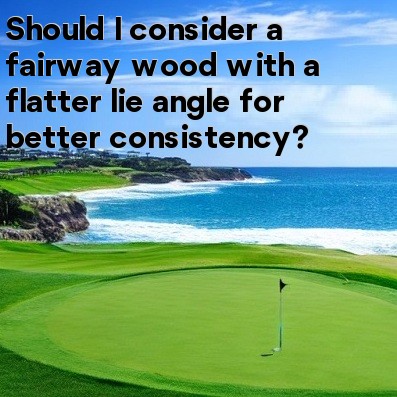
In golf, Should I consider a fairway wood with a flatter lie angle for better consistency?
When it comes to golf equipment, every golfer wants to find the right clubs that offer the best performance and consistency. One club that often divides opinions is the fairway wood. The lie angle of a fairway wood plays a crucial role in determining the consistency of your shots. In this article, we will explore whether considering a fairway wood with a flatter lie angle can indeed improve your consistency on the golf course.
- Understanding the Lie Angle:
- Advantages of Flatter Lie Angle:
- Considerations when Choosing a Fairway Wood Lie Angle:
- Balancing Other Factors:
- Conclusion:
The lie angle is the angle between the sole of the club and the shaft. It greatly influences the direction the golf ball will travel. A lie angle that is too upright can cause the ball to veer to the left for a right-handed golfer, while a lie angle that is too flat can result in shots drifting to the right. Achieving the correct lie angle is essential for consistent ball striking.
1. Improved Accuracy: One advantage of using a fairway wood with a flatter lie angle is improved accuracy. A flatter lie angle promotes a more natural swing plane, allowing the golfer to make square contact with the ball more consistently. This can help in reducing shots that drift off target.
2. Consistent Ball Flight: A flatter lie angle reduces the chances of striking the ball with an open or closed clubface. As a result, the ball tends to have more consistent flight characteristics. This can be particularly beneficial when you're looking to hit a specific target or shape your shots.
1. Swing Characteristics: Your swing characteristics play a significant role in determining the ideal lie angle for your fairway wood. It is important to analyze your swing plane, posture, and body measurements to identify whether a flatter lie angle would suit your natural swing motion.
2. Shot Shape: If you tend to hit fades or slices, a flatter lie angle may help you in controlling the ball flight to reduce these shot shapes. Conversely, if you have a tendency to hit draws or hooks, a more upright lie angle may be preferable to neutralize your shot shape.
3. Experimentation: It is advisable to work with a professional club fitter or golf instructor to experiment with different lie angles and observe the resulting shot patterns. Each golfer is unique, and finding the right lie angle requires some trial and error to optimize performance.
While the lie angle is an important consideration, it is important to note that it is one of several factors that affect the performance of a fairway wood. Other factors like shaft flex, loft, and head design also impact how the club interacts with the ball. Finding the right balance between these factors is essential for maximizing your consistency and performance on the golf course.
In conclusion, considering a fairway wood with a flatter lie angle can indeed contribute to improved consistency in your golf game. A flatter lie angle promotes better accuracy and a more consistent ball flight. However, it is crucial to assess your swing characteristics, shot shape tendencies, and experiment under the guidance of a professional to find the ideal lie angle that suits your game. Remember to also consider other factors that affect club performance for optimal results on the course.





